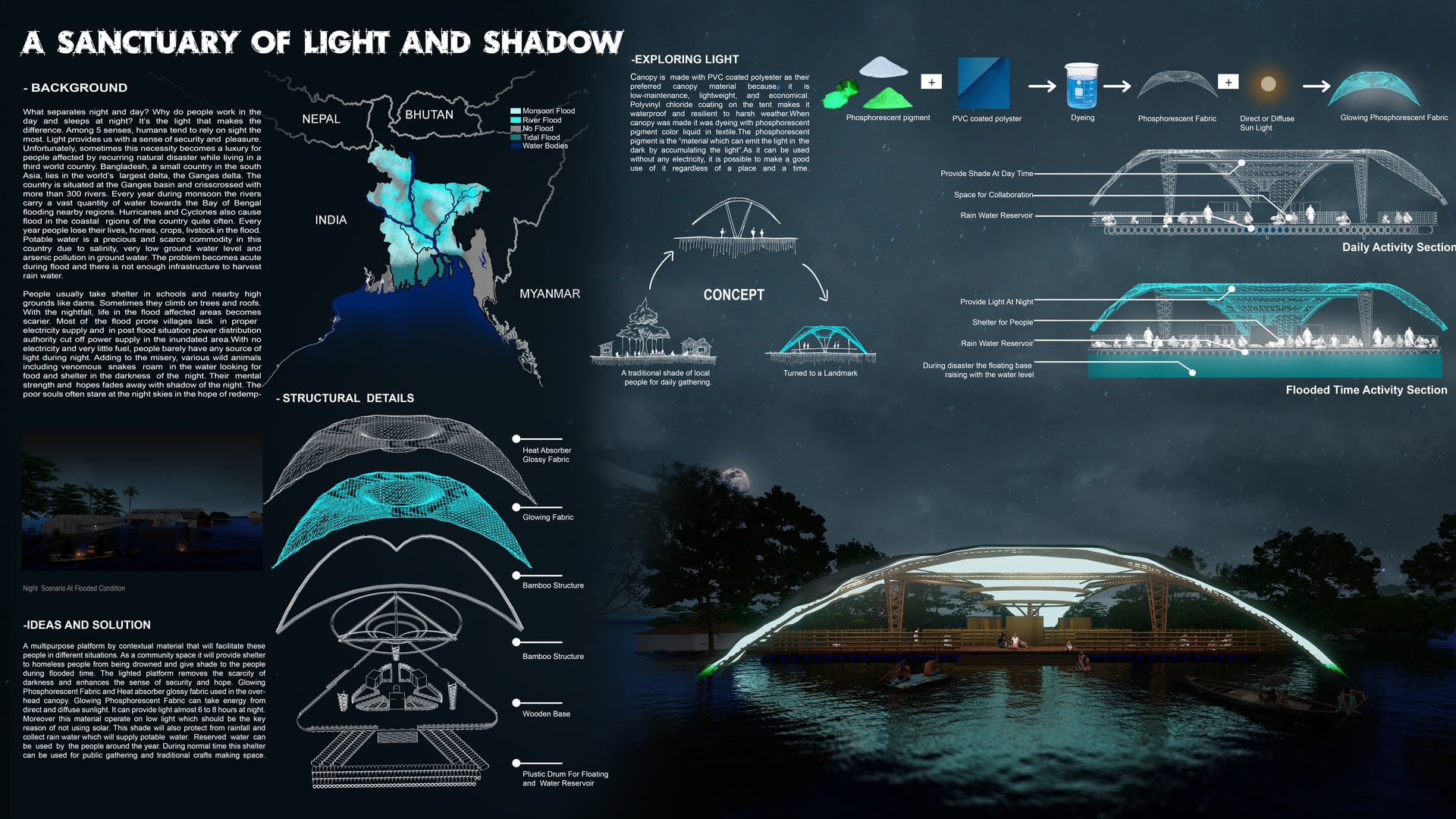Project Description
What separates night and day? Why do people work in the day and sleeps at night? It’s the light that makes the difference. We, humans, prefer light. Among 5 senses, humans tend to rely on sight the most. We perceive our surroundings through sight. And its light that enables our sight and cheers up our mind. Light provides us with a sense of security and pleasure. Without light, we feel dull and insecure. That’s why bright day is used as a metaphor for happiness and dark night is a metaphor for fear and sorrow. The necessity of light can be understood in a post disastrous world. In a place, devastated with natural calamity, even the light of a single glow stick brings a sense of comfort and hope among people in a cold, dark night. Unfortunately, sometimes this necessity becomes a luxury for people affected by recurring natural disaster while living in a third world country. Bangladesh, a small country in the south Asia, lies in the world’s largest delta, the Ganges delta. The country is situated at the Ganges basin and crisscrossed with more than 300 rivers. Every year during monsoon the rivers carry a vast quantity of water towards the Bay of Bengal flooding nearby regions. Hurricanes and Cyclones also cause flood in the coastal regions of the country quite often. Moreover, with the rise of sea level due to global warming, half of this country is at risk of being submerged. Flood is a common natural calamity of this nation for centuries. Every year people lose their lives, homes, crops, livestock in the flood. The land remains submerged for months. Crops die out by being under water for long period of time. Potable water is a precious and scarce commodity in this country due to salinity, very low ground water level and arsenic pollution in ground water. The problem becomes acute during flood as fresh water ponds and tube-wells and other surface water sources becomes submerged and there is not enough infrastructure to harvest rain water. People sometimes consumes polluted water and consequently, water borne diseases breaks out claiming lives. People usually take shelter in schools and nearby high grounds like dams. Sometimes they climb on trees and roofs. During day, they burn under the scorching sun or get showered by the heavy monsoon rain. The environment becomes harsh and inhabitable. With the nightfall, life in the flood affected areas becomes scarier. With no electricity and very little fuel, people barely have any source of light during night. Adding to the misery, various wild animals including venomous snakes roam in the water looking for food and shelter in the darkness of the night. Being surrounded by water and engulfed in complete darkness, fear of the unknown breaks out among the flood affected people. Their mental strength and hopes fades away with shadow of the night. The poor souls often stare at the night skies in the hope of redemption. A multipurpose platform by contextual material that will facilitate these people in different situations. As a community space it will provide shelter to homeless people from being drowned and give shade to the people during flooded time. The lighted platform removes the scarcity of darkness and enhances the sense of security and hope. Glowing Phosphorescent Fabric and Heat absorber glossy fabric used in the overhead canopy. Glowing Phosphorescent Fabric can take energy from direct and diffuse sunlight. It can provide light almost 6 to 8 hours at night. Moreover this material operate on low light which should be the key reason of not using solar. This shade will also protect from rainfall and collect rain water which will supply potable water. Reserved water can be used by the people around the year. During normal time this shelter can be used for public gathering and traditional crafts making space. We do it communal because there are a lagged behind community we find in every village those who have not the chance of getting electricity. Their living condition is too bad to live. Dark and less airy even in day time. So they can get help from our structure to take rest and the opportunity of light even at night. Because most of them yet not get the electricity. Actually they have electric line but can't able to pay bill. You could add this. Their amount is around 30%. Just think those who have the scope to shift or migrate from flood affected area they do. Those who are not either would be land lord or maid. During our discussion we someday call our place as a park what can serve severely disadvantaged peoples, just like the urban park.
